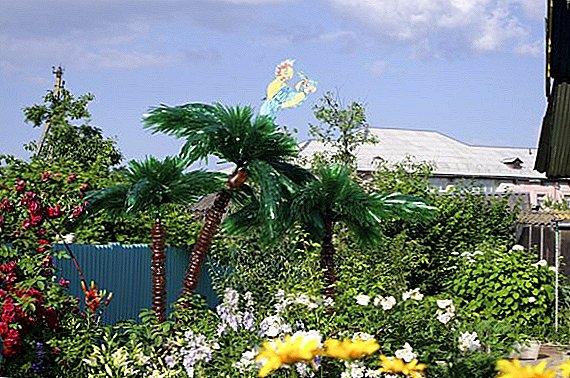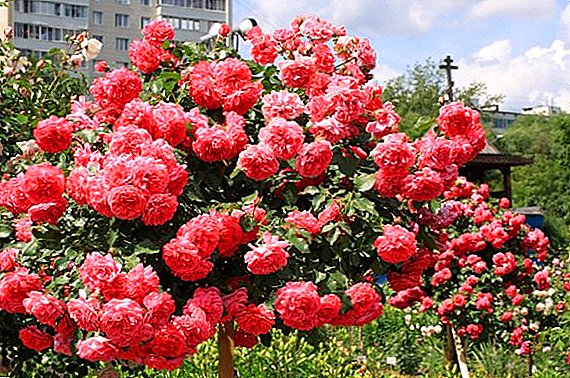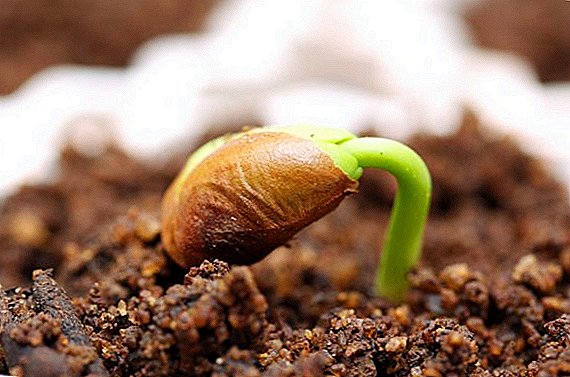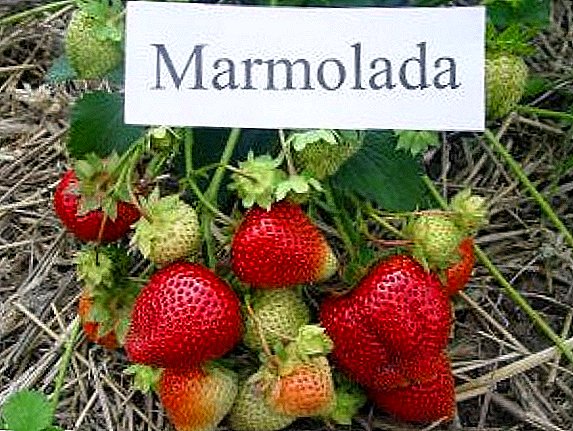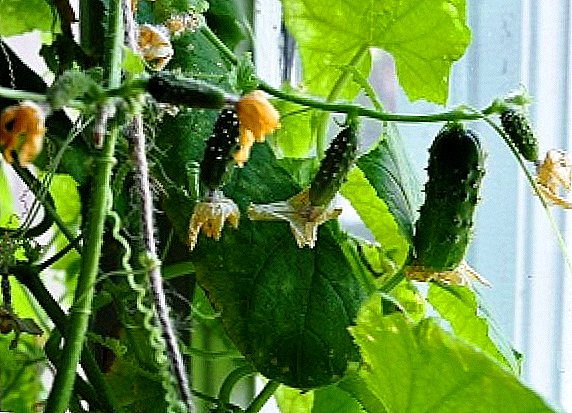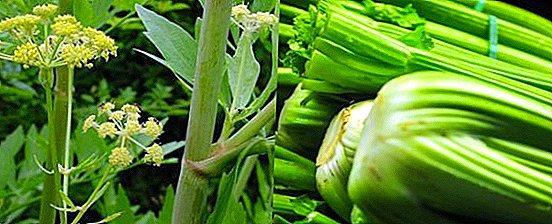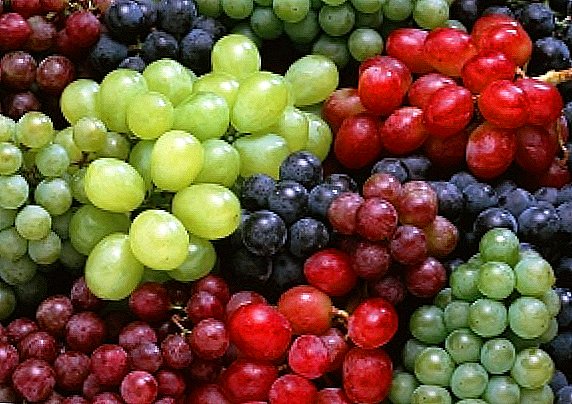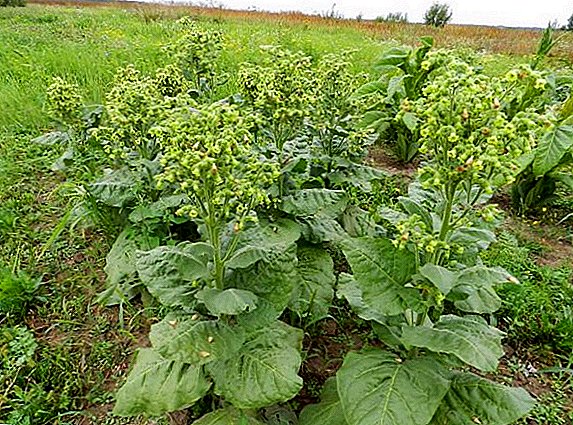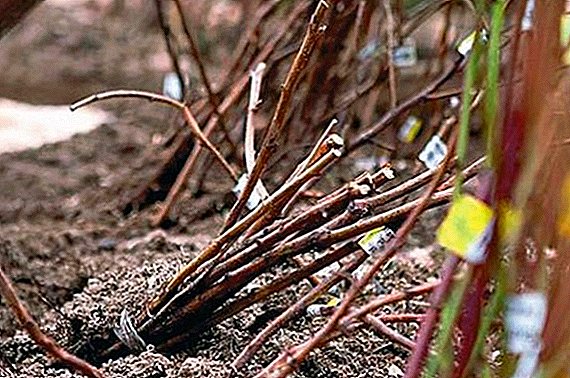 Gardeners often have a situation when plant seedlings have already been purchased, and for one reason or another they cannot be planted. For example, early frosts struck in the fall and planting should be postponed until spring. Fortunately, there are ways to save seedlings until planting. Features storage saplings and is dedicated to this material.
Gardeners often have a situation when plant seedlings have already been purchased, and for one reason or another they cannot be planted. For example, early frosts struck in the fall and planting should be postponed until spring. Fortunately, there are ways to save seedlings until planting. Features storage saplings and is dedicated to this material.
Where to store seedlings before planting
The method of storage of seedlings is determined by various factors: the necessary period of storage of planting material before planting, climatic conditions, the availability of suitable premises, etc. Let us consider these methods in more detail.
Did you know? One of the seven wonders of the ancient world, the famous hanging gardens of Semiramis, should in fact be called gardens "Amitis" on behalf of the Amian princess Amitis, for whom the Babylonian king Nebuchadnezzar II ordered them to be built. Semiramis also lived about two hundred years before the construction of these gardens.
In prikop
Using prikop allows you to save seedlings throughout the winter until planting. The prikop itself is a trench. It should be dug in a fairly dry place. For this fit, for example, potato or tomato beds. The trench needs to be oriented in the west-east direction.  The depth of the trench is half a meter. The length depends on the number of plants that are attached - they should be fairly free in the trench. The northern wall of the trench is made steep, at a right angle. The south should be tilted approximately at an angle of 45 °.
The depth of the trench is half a meter. The length depends on the number of plants that are attached - they should be fairly free in the trench. The northern wall of the trench is made steep, at a right angle. The south should be tilted approximately at an angle of 45 °.
All excavated land is thrown over the northern edge of the trench. Sand and peat are mixed into the ground, taken out of the trench. If necessary, seedlings are prepared for wintering: remove uncut leaves and damaged roots.
After this, the plants can be laid in a trench. They are laid with trunks on the southern, gently sloping side, so that the roots will be oriented to the north and the tops to the south. A trench with seedlings placed in it is sprinkled, but not completely, with about 20 cm of previously excavated and prepared soil.
In this form, the prikop is left before the onset of stable frosts, i.e. every night the air temperature should fall below zero. If frosts have occurred, the remaining soil will be poured into the trench, and in the process of adding soil, layers of earth must be poured with water so that the soil is compacted. On top of the trench it is necessary to form a mound, which will help avoid the accumulation of melt water in it in the spring.
Important! With this method of wintering seedlings can not be lined with spruce leaves, straw, sawdust. The prikop itself does not need to be wrapped with film or covering materials, since this can lead to premature awakening of the plants. It is advisable to periodically throw snow on prikop.
Under a thick layer of snow
If in winter a steady and abundant snow cover is formed, then the seedlings can be kept simply in the snow. First, before the precipitation falls, they are stored in an unheated room, for which they are prewrapped with a moistened cloth (preferably with burlap) and a film.
When snow falls in sufficient quantities (at least 15 cm cover is recommended), plants can be laid. The roots of the seedling are dipped in a bag of burlap, filled with a mixture of sawdust and peat, tied this bag around the bottom of the trunk.  The branches gently. The whole plant is wrapped with polyethylene and fixed with a scotch tape. To bury the plant should be in a shaded area of the garden, where direct sunlight does not fall and there is no danger of weathering snow.
The branches gently. The whole plant is wrapped with polyethylene and fixed with a scotch tape. To bury the plant should be in a shaded area of the garden, where direct sunlight does not fall and there is no danger of weathering snow.
In a cold place
Seedlings can be stored in the refrigerator, if, of course, allow the size of the equipment and will not mind this use of family members. To do this, the plant is wrapped with 2-3 layers of wet gauze, then simply placed in a plastic bag.
No need to tie this bag, otherwise a clogged plant can moldy. The optimal storage temperature is 0 ° C ... + 2 ° C. This method is suitable only for relatively short-term storage, usually not more than three weeks.
Instead of a refrigerator, you can use a glazed balcony or loggia. Preparation for storage is exactly the same as when using the refrigerator. When the seedlings are purchased with a root system packed in a soil substrate, then for storage, you need to pierce the protective film in several places.  If a lump of earth is dry, it should be moistened a little, but not watered plentifully. In this form, the plant can last two to three weeks. In the case of storage in the cellar, the seedlings are dipped in plastic bags and sprinkled with wet sawdust.
If a lump of earth is dry, it should be moistened a little, but not watered plentifully. In this form, the plant can last two to three weeks. In the case of storage in the cellar, the seedlings are dipped in plastic bags and sprinkled with wet sawdust.
We recommend that you read about how to build a barn, a cellar and make ventilation in it.
Leave upright. Packages can not be tightly tied to prevent damage to the plant. In addition to packages, boxes can also be used for storage in the cellar. Seedlings are placed in an upright position and covered with wet sand or wet sawdust. For the entire storage period, the substrate is kept moist.
The optimal temperature for storage in the cellar is -2 ° C ... + 2 ° C. It is better to prevent overcooling or overheating, therefore it is desirable to control temperatures with a thermometer. If the cellar is very dry, you can increase the humidity of the air by putting an open container with water in it. However, high humidity, over 60%, is dangerous for seedlings and can destroy them.  For storage of planting material in unheated utility rooms, such as a shed or garage, boxes are used. They are filled with sawdust or hay and seedlings are placed there in an upright position, wrapped in film.
For storage of planting material in unheated utility rooms, such as a shed or garage, boxes are used. They are filled with sawdust or hay and seedlings are placed there in an upright position, wrapped in film.
They should not come into contact with the walls of the box, and the minimum distance to the walls should be at least 10 cm. Top and bottom of them covered with several layers of sacking or just old things. Full safety of all planting material with this method of storage is not guaranteed.
Sometimes signs of development are already noticeable on purchased seedlings, but it is still early to plant them in open ground. In this case, plants can be saved by transplanting them into a container. Before planting, the roots of the seedling are immersed in clean water for 12 hours, after which the plant is planted in a container with a capacity of 2-3 liters.
The container with the plant is placed in some cool room, protected from direct sunlight - it can be, for example, a glazed balcony or a glazed veranda.  Watering and feeding plants should be minimal, so as not to provoke its premature rapid growth. Landing is usually done in May. It should be borne in mind that with this method of planting the plant is always weakened and will require more careful care in the near future.
Watering and feeding plants should be minimal, so as not to provoke its premature rapid growth. Landing is usually done in May. It should be borne in mind that with this method of planting the plant is always weakened and will require more careful care in the near future.
Did you know? Most of the modern stone fruit, walnut, and pome fruits of garden crops began to be cultivated about three thousand years ago. But the berry cultures began to breed much later. So, it is known from garden sources about garden currants and gooseberries, earlier references to them are absent.
Storage features
Storage of various garden plants (be it fruit trees, berry bushes or a vine) has its own characteristics. We will try to understand them. 
Coniferous plants
These plants can not be stored in the cellar. But, if they are sold in a container (and most often it happens), you can prikopat them in the garden without removing it from the container, in a place protected from wind and sun. At the same time, it is necessary to sprinkle the soil over the roots with peat for better insulation.
The top of the seedling should be carefully covered with a covering material. There is another good option for storing coniferous plants. For this purpose, an unheated garage or shed is used. The technology of preparation for such storage is described above. The only caveat - no need to wrap the crown of the plant.
Fruit trees
The best place to save fruit trees is the cellar. The method is described in detail above, and there are no particular features in the storage of these particular plants.
Get acquainted with the nuances of planting saplings of cherry, apple, cherry, pear, plum, peach, cherry plum, quince, apricot, walnut and red mountain ash.
 Before laying in the cellar, leaves should be removed if they were left on the seedlings inadvertently. Such methods of storing fruit trees as prikop and placement in the snow are also widely used.
Before laying in the cellar, leaves should be removed if they were left on the seedlings inadvertently. Such methods of storing fruit trees as prikop and placement in the snow are also widely used.Shrubs
Peculiarities of shrub placement completely coincide with the methods of storing fruit trees seedlings. Those. The best places are the cellar, prikop and snow.
Grapes
The best storage methods for grapes are prikop and cellar. If a prikop is used, the grape cuttings tied together in bunches are laid in a trench (tightly). Before laying the roots it is recommended to dip into a weak solution of potassium permanganate. This method is often practiced if the cuttings very much.
You will probably be interested to get acquainted with the best varieties of early, cold-resistant, nutmeg, table, white, pink, technical grapes.

Important! If the grape seedlings go in the mail for too long, they may dry out excessively. In this case, before storing them for storage, it is recommended to soak them in clean water for a day.
Rose
The best storage method for roses is prikop. In extreme cases, if the rose has awakened ahead of time, use containers in cool rooms, as described above.
We advise you to read about how to plant seedlings of roses out of the box, how to plant a rose on a dog rose, how to grow a rose from a bouquet, how to care for a rose in a pot, how to plant roses with cuttings.
Useful tips for gardeners
When storing plants should consider some of the nuances:
- if materials necessary for storing seedlings, such as sawdust, sand, etc. if it froze, it is better to defrost them with boiling water;
- a layer of sawdust can be piled on top of the seedlings stored under snow - this will save the snow during thaws;
- the best substrate for roses is wet river sand, not sawdust;
- to protect the prikop from rodents, you can cover it with a fine-mesh net.
So, there is a sufficient number of ways to store plant seedlings, both for a short time and for the entire autumn-winter period. The main thing is to choose the best way for a particular type of plants and adhere to the rules when laying them in storage, since they are quite simple.  Knowledge of these methods is especially important when planting purchased seedlings becomes impossible due to weather conditions, which happens quite often.
Knowledge of these methods is especially important when planting purchased seedlings becomes impossible due to weather conditions, which happens quite often.


